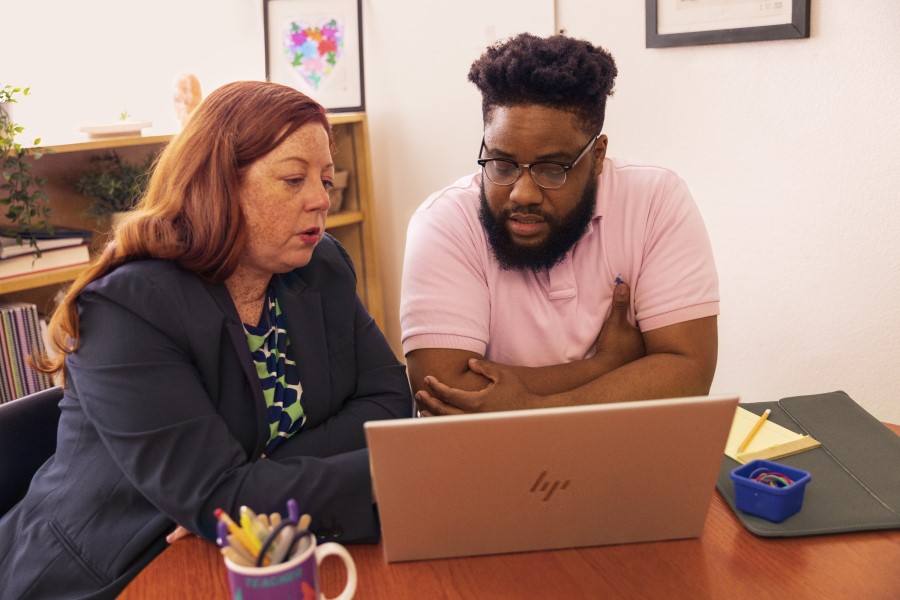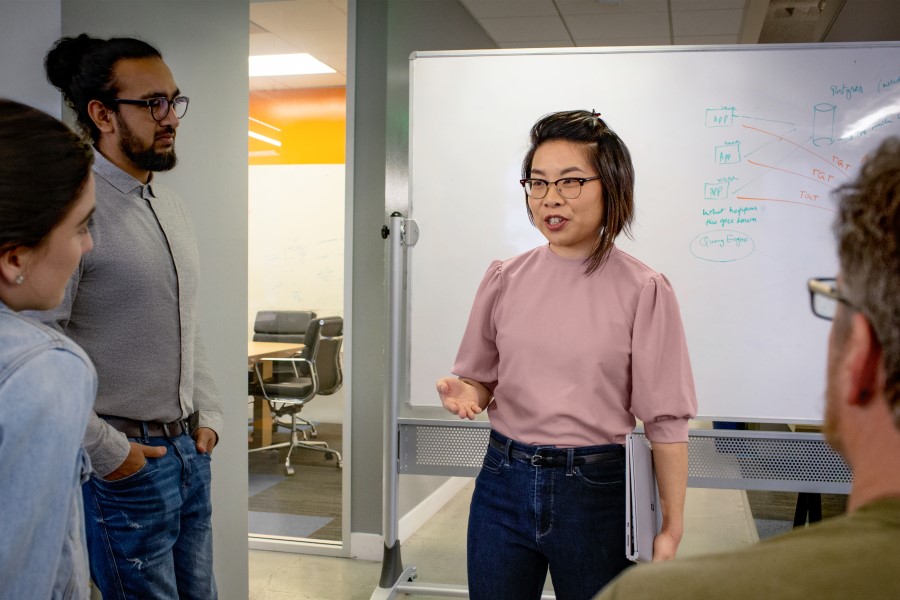
Microsoft Azure enables educational institutions to adapt to new realities, improve operations, and protect student and faculty information from cyber threats.
In today’s rapidly evolving world, education is facing unprecedented challenges that require transformation. Microsoft plays a pivotal role in providing the tools and resources schools need to create a more inclusive, equitable, and effective education environment. With AI-powered, secure, and flexible solutions, Microsoft Azure enables educational institutions to adapt to new realities, streamline operations, and protect student and faculty information from cyber threats.
By leveraging Azure’s powerful tools, you can tackle today’s challenges and prepare for future success. Learn how Azure can help your IT team modernize confidently, prepare for future growth, and embrace AI integration within your educational institution.
Empower innovation with a highly secure cloud foundation
Azure helps educational institutions modernize and grow with scalable cloud solutions. With a $20 billion investment in cybersecurity, Microsoft provides robust protection, including customized hardware, integrated controls, and defenses against threats like DDoS. Supported by a global team of over 3,500 cybersecurity experts, these measures ensure that student data is secure. This allows institutions to focus on strategic goals and student success.
Azure enables efficient resource management and creates a secure, agile, and AI-ready foundation, so educators can prioritize delivering equitable learning experiences for all. Here are five ways Azure can help you transform student experiences at your educational institution and streamline operations.
1. Create personalized education experiences with AI

Azure OpenAI Service helps you transform educational experiences with AI tailored to the unique needs of your students, educators, faculty, and staff. With access to the latest AI models, like GPT-4, you can create private AI interactions for a wide range of applications like curriculum design, helpdesk efficiency, programs for advising students, and automating routine tasks.
Reimagine student experiences and streamline administrative tasks
AI can help you create intelligent experiences across your educational institution. Run Azure OpenAI Service on your data to gain insights and apply conversational AI to a variety of use cases to help your educators, faculty, and staff save time and work more efficiently. Building your own copilots allows you to chat with your data using natural language, generate and summarize content, and surface information from vast amounts of data. Specifically, you can:
- Personalize experiences: Tailor academic content, support, or services to individual learners based on their behavior, preferences, and needs.
- Offer service and support assistants: Improve service interactions and administrative processes with quick assistance through self-service portals.
- Automate information discovery: Use AI to extract valuable insights and knowledge from large volumes of data, summarize results and insights, and generate content.
Learn more about how educational institutions worldwide are using Azure OpenAI Service to transform experiences for students, educators, faculty, and staff.
The University of South Florida (USF) leveraged Microsoft AI solutions and Azure OpenAI Service to streamline their IT ticket classification process enabling rapid, automated ticket handling, faster response times, and satisfaction. This integration led to the swift development of AI-powered Help Desk chatbots, reducing workloads and improving efficiency.
National Taiwan Normal University utilized Azure OpenAI’s Davinci and ChatGPT to create 10 “CoolE” bots for the Cool English platform, each with a distinct personality tailored to different ages and proficiency levels. These bots engage students in scenarios like solving mysteries or exploring career insights, providing personalized learning experiences based on individual preferences and needs. This innovative approach enhances student engagement and personalizes learning experiences
IU International University of Applied Sciences leveraged the scalability, availability, and speed of the cloud to build Syntea, powered by Azure OpenAI Service. Syntea provides students with personalized, round-the-clock learning assistance that integrates seamlessly with platforms like myCampus and Microsoft Teams, delivering instant answers and personalized feedback. This AI study tool enhances learning efficiency, reducing course completion times by 27%, and exemplifies IU’s commitment to improving educational outcomes with advanced AI.
The South Australia Department for Education, in collaboration with Microsoft, used Azure AI Content Safety to secure EdChat, an educational chatbot, ensuring a safe digital learning environment by blocking harmful content. This integration allowed for a successful trial with 1,500 students and 150 teachers, demonstrating EdChat’s effectiveness in enhancing research and learning. The robust safety features enabled rapid deployment and increased student engagement, providing confidence for broader implementation.
2. Maximize the value of your data
Data is only as powerful as your educators’ and staff’s ability to use it. Azure’s modernized data analytics centralizes and manages data services, integrating disparate sources and breaking down departmental silos. This ensures secure, compliant, and accessible insights, enabling informed decision-making. Azure’s scalable solutions also alleviate the IT burden, empowering faculty and staff to focus on education and innovation.
With solutions like Microsoft Fabric, which centralize and manage data on a single, open governed foundation, you can unlock and share actionable insights across your institution. With data seamlessly flowing from Fabric, you simply describe what you need—including reports, summaries, and calculations—using conventional language, and Copilot in Fabric does the rest. You can also fuel your own tailor-made generative AI experiences in Azure AI Studio with curated data from Fabric.
USF uses Microsoft solutions to accelerate data-driven decision-making by empowering its teams to access information and enriched business insights through a self-service approach. USF freed its teams from repetitive manual tasks by connecting its information sources using Azure Synapse Analytics and Microsoft Power BI to reduce administrative work and produce reports in minutes.
3. Scalability and flexibility

Azure cloud solutions provide the scalability and flexibility schools need to accommodate growth while optimizing costs and operational efficiency. This helps IT professionals stay ahead of technological advancements and manage resources across datacenters, the edge, and multiple clouds. With this adaptability, institutions can prepare for future demands while managing costs.
Colorado State University (CSU) showcases the scalability and flexibility of Azure in modernizing their IT infrastructure. By migrating to Azure Stack HCI, CSU’s College of Business consolidated its on-premises environments into a unified ecosystem, improving the performance of SQL servers, printing systems, and remote desktop services. With Azure Stack HCI, primary and secondary (K12), and higher education institutions can easily streamline their operations, enhance efficiency, and ensure a scalable, flexible environment for students and staff.
4. Operational efficiency
With Azure, IT professionals can create reliable and secure systems that are performant with cloud and AI investments and leverage enablement support to help achieve operational efficiency. We know no two schools are alike, so whether you’re a small educational institution or a large university with many campuses, you can get customized support in three distinct ways:
Using Azure services, Torrens University has leveraged generative AI to enhance its online learning experience, saving 20,000 hours and $2.4 million in time and resources. They have seen first-hand how Azure empowers educational institutions to achieve operational excellence and drive innovation.
5. Deliver secure access to services for students and staff, wherever they are

Cloud-based IT infrastructure, like Azure, ensures seamless access to educational resources through virtual desktops, while providing continuity and cyber resilience with backup and disaster recovery. These measures quickly restore normal operations, safeguard critical data, and maintain school operations during disruptions, protecting against data exposure, high recovery costs, and reputational damage. Azure solutions also support remote learning and work, enabling students and staff to access necessary tools from virtually anywhere, ensuring uninterrupted education.
Avans University of Applied Sciences in the Netherlands uses Azure Virtual Desktop for remote exams, saving €150,000 annually and enhancing accessibility for all students and staff. Azure Virtual Desktop provides access to applications and resources in any environment with flexibility and control in a familiar computing experience that can be securely accessed on any device.
Take the next step
Azure is a key partner in educational transformation, offering tools and services to tackle today’s challenges and build a strong future. By leveraging Azure, educational institutions can drive innovation, improve efficiency, and ensure success for future generations.
Explore these resources to get started and learn how Azure can help shape the future of your educational institution.